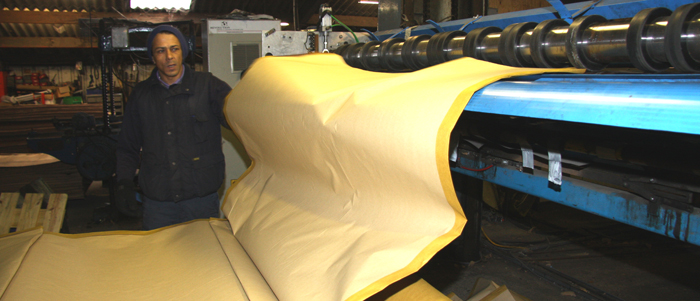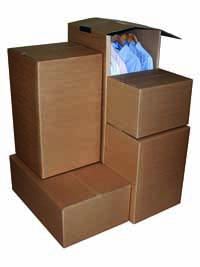After bumping into the guys from Kes at The Movers and Storers Show in November, Steve Jordan, Editor of The Mover, took a trip to darkest Iver Heath in Buckinghamshire to find out what goes into making a top quality paper blanket.
It was back in 1986 that Kirk Smith’s father sold his reclamation company and Kirk started Kes. Today Kes is one of only two paper blanket manufacturers in the UK producing well over 2 million blankets a year, about 50,000 bed bags, and supplying a wide range of cartons to the moving industry in the UK and abroad too.

Kirk’s factory, conveniently located next to the family home where he grew up, is not packed with modern equipment and computer-controlled, LED flashing robots. It’s a traditional factory using practical equipment and the expertise of its staff to produce the products its customers need.
Three machines chunter away all day turning out blankets of varying widths, bed bags, and blankets on a continuous 33-metre roll ideal for wrapping large pieces of furniture with only a single join. But, according to Kirk, the quality of the final product is dictated by the customer. His company does not manufacture in bulk then sell what it has in stock. Instead it takes orders to customers’ specific specifications and manufactures accordingly. If you want a blanket that’s top quality, designed for packing the most delicate of antiques, it’s yours; if you have something more ordinary in mind, that’s OK too. It’s all down to you.
Peter Gosling works with Kirk as the company’s Key Account Manager. He explained that the quality of the final product is partly down to the materials chosen and partly the manufacturing process employed. “One thing to look out for,” said Peter, “is to make sure the inner layers all cover the whole width of the blanket. Some manufacturers skimp on this and so produce an inferior product.”
But it is the materials chosen that generally differentiate one blanket from another. “The outer sheet is a big component in high quality blankets as it is a pure Kraft paper that provides the strength,” Kirk explained. “The filler layers may be embossed to create extra padding and the inner surface should have a nice smooth pure MG (Machine Glaze) finish to protect the furniture.”
By contrast some customers require all recycled materials. “They can have all recycled materials if they want but we wouldn’t recommend it. Recycled paper has contaminants, such as plastic fragments, which can cause abrasion particularly on very delicate polished surfaces. We don’t want to go that route,” explained Kirk. “Even on recycled products we would advise using a pure Kraft inner sheet.
Embossing the inner ply sheets creates more bulk and puts more air between the layers to provide protection from impact and from heat changes that cause condensation. But for some applications, customers prefer not to have embossing. “If very delicate items are in store for a long time the embossing can come through to mark the surfaces. For this reason the antique trade often prefer a perfectly flat product.”
Generally the more layers of air you can get the better. With this in mind Kes has recently started producing a new 8-ply, super-soft blanket for top end use. “Overall the weight is the same as we use lighter inner layers, but it’s slightly stronger than the old 6-ply product and provides better cushioning,” said Kirk. “It is only marginally more expensive. Although we only launched the product at The Movers and Storers Show, it’s already proving popular.”
 Carton supply and recycling
Carton supply and recycling
Kes does not manufacture cartons but is a major distributer of cartons from D. S. Smith Plc. As well as supplying cartons Kes provides a recycling service through D. S. Smith that uplifts paper, plastic and timber materials from customers, giving significant savings on their disposal costs. Depending on the market price for waste materials, it’s possible that moving companies could even get some revenue for their waste. “It costs about £110 a tonne to dispose of old materials,” explained Kirk. “We can reduce the amount companies send to landfill by around 60%. This can amount to a lot of money for some of the larger companies. Everyone should be doing it.”
For more information visit: www.paperblankets.com